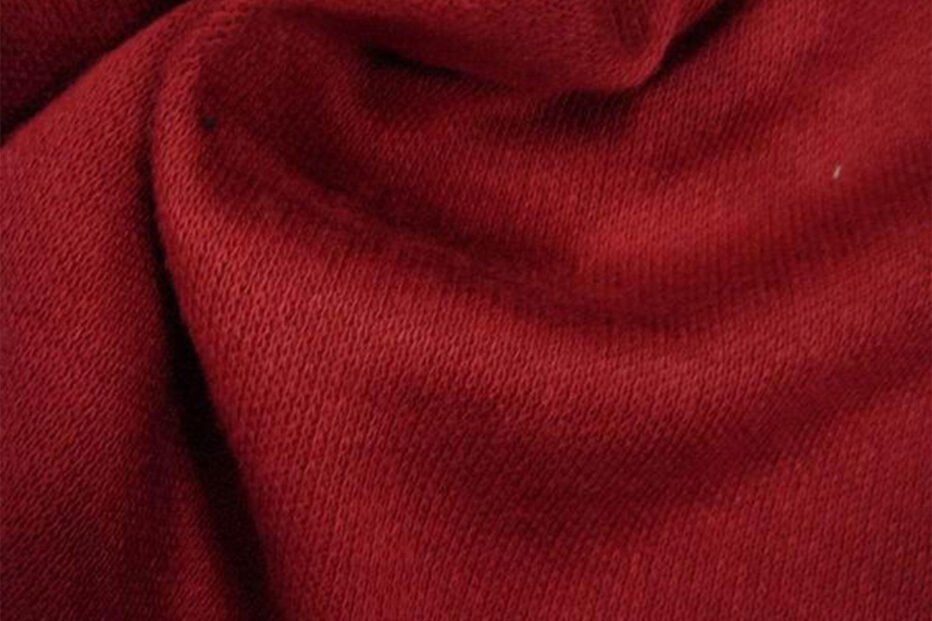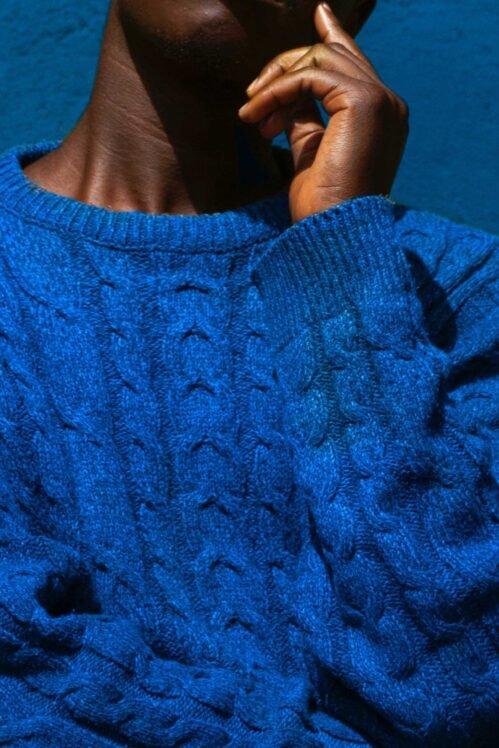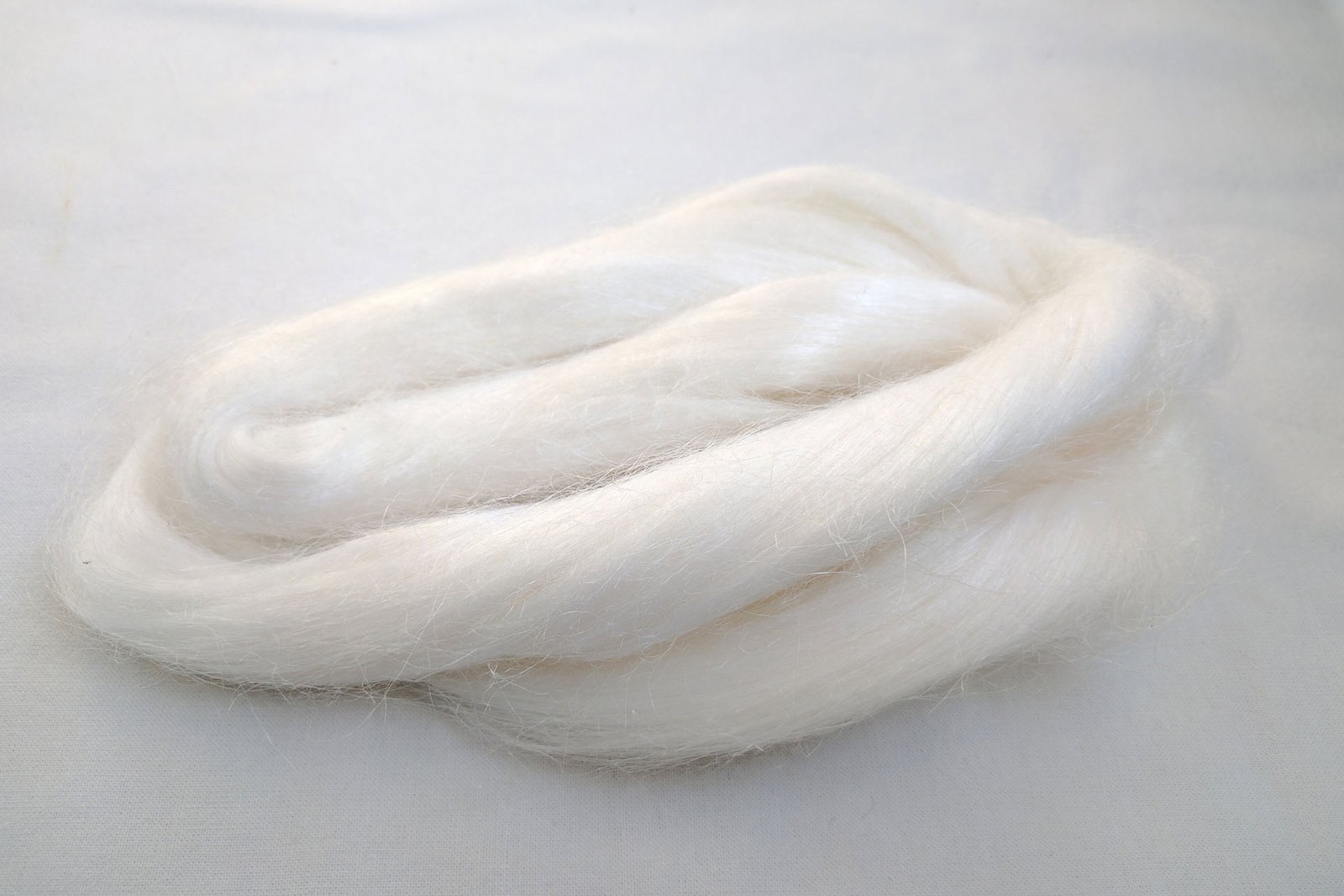
Description
A synthetic fiber that is similar to wool but more affordable.
Acrylic fiber is made from a synthetic polymer called acrylonitrile. It is produced by reacting certain petroleum or coal-based chemicals with a variety of monomers. It has a wool-like aesthetic and can be used on its own or blended with other natural and synthetic fibers, which enhances its stretchiness, luster, and warmth.
Background
Story
Acrylic was created in 1941 by DuPont and trademarked as Orlon. However, it was not produced in large quantities commercially until the 1950s. Acrylic fabric is made in a way similar to the production of polyamide fabric (or nylon fabric) and polyester fabric.
Manufacturing
When heat and pressure (energy) is applied to the fossil fuels (petroleum, natural gas, and less commonly, coal), polymerization occurs and a plastic solution is formed. Polymerization describes when two or more molecules bind into a repetitive molecular chain. After polymerization, the plastic solution is in a viscous form. This means the solution’s state of matter is somewhere between a solid and a liquid.

Expertises
Characteristic
• Lightweight and soft Wear and tear resistant
• Retains warmth
• Prone to melt
• Pills easily and is often chemically treated Moisture wicking and fast drying
• Highly UV resistant
• Chemical resistant, stable with common bleaching agents
• Mildew and insect resistant
• Takes dye and is colorfast
• Washes easily and will not shrink like wool
• Gathers static electricity
what is acrylic fabric made of?
Once the acrylic fiber is washed, dried, and cut, it is ready to be spun into thread. The threads are then woven into fabric, with acrylic fabric as the end result. It’s common that acrylic fiber and acrylic threads be woven with other types of fiber to create what’s called a ‘blend’. This is usually done as a cost cutting measure, since synthetic fibers are often cheaper than natural fibers. So if you see a shirt advertised as a ‘cotton-blend’ or ‘wool-blend’, it isn’t just cotton or wool, there’s another fiber in the mix.
what are the properties of acrylic fabric?
Acrylic fiber closely resembles the look and feel of wool fibers. Acrylic fabric is lightweight, warm, and soft to the touch. It is thus used in place of wool or blended with sheep wool or cashmere. Common end products of acrylic fabric include sweaters, hats, socks, and knitting yarn.
Like polyester and nylon, acrylic fabric is hydrophobic – meaning it repels water. This can lead to bacteria growth in the fabric which may compromise the structure and cause odor. It also means that acrylic fabric is more likely to create static electricity and cling. Acrylic fabric is also flammable and can be extremely difficult to extinguish, whereas wool is extremely difficult to light.
Compare to natural fiber yarn
Acrylic fiber based knitting yarns are often available at lower prices than natural fiber yarns. However, they lack some of the desirable properties offered by natural fibers. Unfortunately, acrylic yarns are not as soft as natural fiber yarns and do not have the ability to felt. Acrylic fiber yarns can also cause discomfort to the knitter, because the yarn does not have give. When finishing a garment, acrylic yarn requires heat to let the final product set (or relax). With these properties in consideration, natural fiber yarns made with wool, cotton, linen, or silk, are a worthy investment.
Social
12k followers
30k likes
Youtube
22k subscribers
8k followers
Have a project in mind?
If you have a great idea, reach out to me. Whether it is a small or big project, I will listen first and get back to you with a plan.

